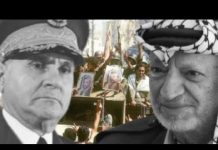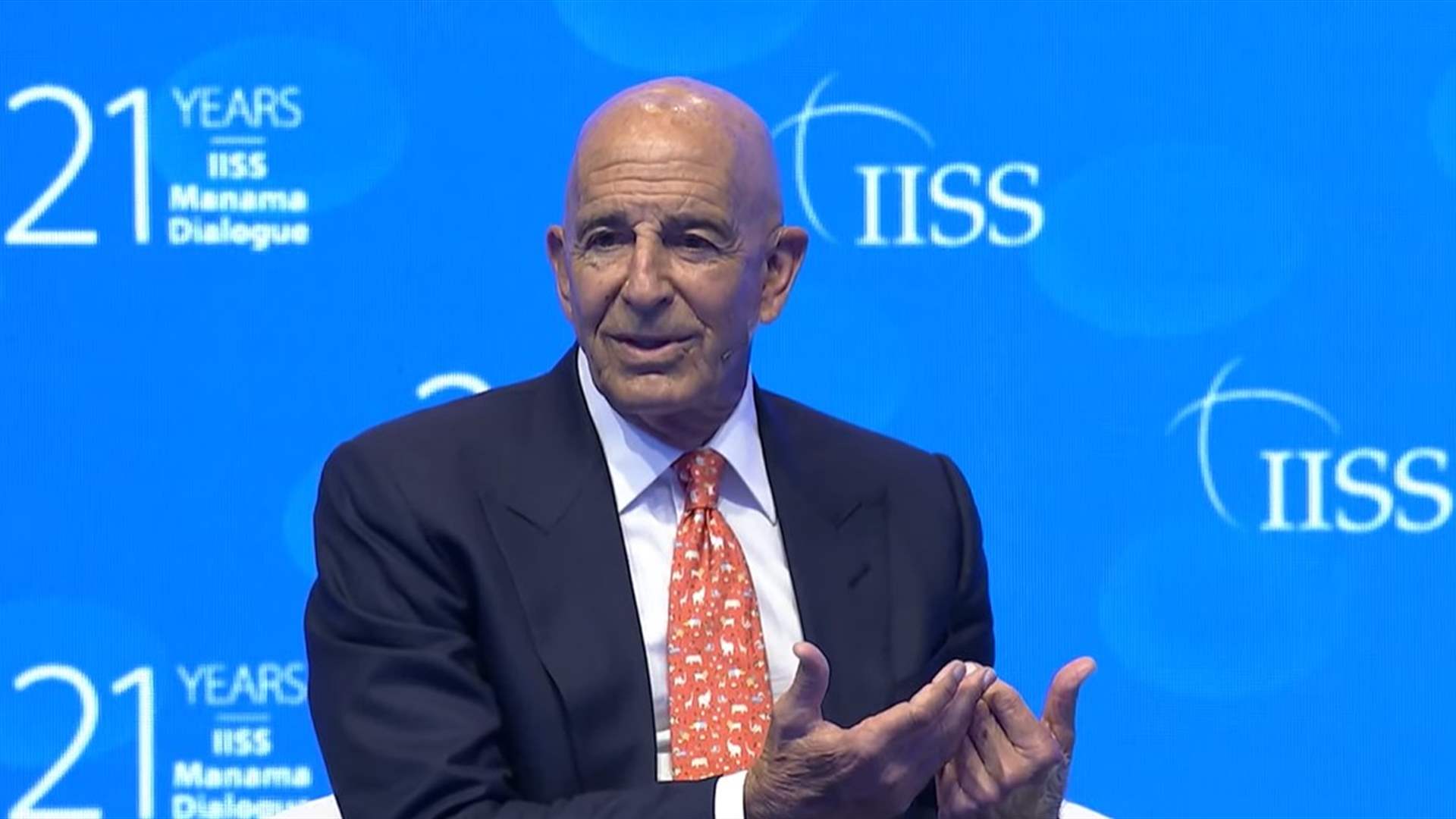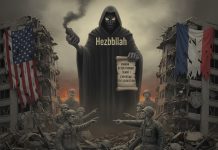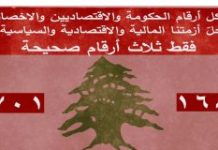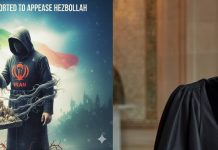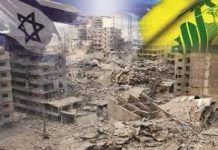آلة الاغتيال التابعة لحزب الله…ما يكشفه لنا مقتل إلياس الحصروني ولقمان سليم حقًا
د. مكرم رباح/موقع ناو لبنان/15 تشرين الثاني/2025
(ترجمة بحرية من الإنكليزية بوسطة الياي بجاني بالإستعانة بمواقع ترجمة ألكترونية)
Hezbollah’s Assassination Machine: What the Killing of Elias al-Hasrouni and Lokman Slim Really Tells Us
Dr. Makram Rabah/Now Lebanon/November 15/2025
The Israeli army’s disclosure—that Hezbollah’s Unit 121 orchestrated the assassination of Lebanese Forces official Elias al-Hasrouni in August 2023—did not surprise those who have long understood how Hezbollah maintains its grip on political life in Lebanon. What the information did was confirm what many Lebanese have whispered privately for years: political murder is not a deviation from Hezbollah’s doctrine; it is one of its foundational tools.
Hezbollah had insisted that Hasrouni died in a car accident. But the new intelligence describes something else entirely: a premeditated ambush near his home in Ain Ebel, followed by kidnapping, poisoning, the fracturing of his ribs, and the deliberate staging of his vehicle to resemble a fatal crash. This level of planning and precision reflects not a moment of wartime improvisation but the operational method of an organization that has used political elimination as a pillar of its strategy since the day it was formed.
Some will dismiss the revelation simply because it comes from Israel. But that argument collapses immediately under scrutiny. Yes, Israel is a sworn enemy of Iran and Hezbollah. But this reality does not undo Hezbollah’s own internal record of surveillance, intimidation, and assassination. Two truths can coexist: Israel has every political interest in exposing Hezbollah’s crimes, and Hezbollah has a long, well-documented history of committing those crimes against fellow Lebanese.
The question “why would Hezbollah assassinate a political opponent?” only confuses those who refuse to confront the fundamental nature of the group. Hezbollah was not established in 1982 as a Lebanese community project or a political experiment. It emerged as an Iranian-organized hit squad, built to eliminate rivals, sabotage state institutions, impose ideological control, and regulate political life by force. Its early resume—the bombings, the kidnappings of journalists and diplomats, the execution-style murders, the disappearances—reads like the textbook of a militia designed to police a society, not liberate it.
Its logo, with a raised rifle at its center, openly says what others pretend not to hear: violence is not an accessory; it is the heart of the movement. Everything that followed—as in the 2005 assassination of Rafic Hariri, executed by operatives of the very same Unit 121—flows directly from these origins.
Unit 121, the branch implicated in Hasrouni’s killing, occupies a central role in Hezbollah’s internal architecture. It is the group’s enforcement arm—the unit tasked with identifying, tracking, isolating, and neutralizing anyone whose presence challenges Hezbollah’s narrative or authority. Its former commander, Salim Ayyash, convicted by the Special Tribunal for Lebanon for orchestrating Hariri’s assassination, remains celebrated and sheltered by Hezbollah, a symbol of how deeply political assassination is woven into the party’s identity.
The operation against Hasrouni followed the same patterns that Lebanese have come to recognize: the surveillance of the target, the elimination itself, the fabrication of a public explanation, and the reliance on fear and silence to ensure that the story sticks. This is not how political parties behave. This is how parallel states enforce compliance.
And it did not happen in isolation. Lokman Slim, the outspoken writer and activist, was kidnapped in 2021 just a few kilometers from where Hasrouni was later killed. Slim, like Hasrouni, had been relentlessly threatened, monitored, and vilified for rejecting Hezbollah’s domination of the Shiite community which he belonged to. His execution—shot at close range, dumped in his car, left as a message—fit precisely the same operational signature: a targeted killing, followed by a staged scene and a climate of terror designed to ensure silence. His wife, his sister, his colleagues, and human rights organizations all pointed to Hezbollah’s responsibility, and yet the state could not even conduct a basic investigation. Two murders, two critics, two staged crime scenes—both in the same contested geography. This is not coincidence; it is a pattern.
The Hasrouni assassination is merely the latest entry in a catalogue of political killings that stretches back decades. Each time, the basic sequence repeats: an opponent is eliminated, a narrative is crafted, a segment of society is intimidated into silence, and the state retreats into impotence. The argument that “there is no proof” becomes not a reflection of innocence but a symptom of the environment Hezbollah has engineered—one where proof cannot emerge because the state is too weak, too infiltrated, or too afraid to seek it.
Lebanon’s crisis is not only economic or institutional. It is existential. A state that cannot protect its citizens from a militia within its borders is not a sovereign state. A republic where political figures, writers, journalists, and local notables can be abducted, poisoned, shot, or disappeared without consequence is not a functioning republic.
The Israeli disclosure may have supplied the details, but it did not create the problem. It only reminded Lebanon of what it has spent years avoiding: Hezbollah’s monopoly on violence is the central obstacle to the country’s sovereignty. The group’s political dominance is not sustained through elections or persuasion, but through a decades-long strategy that blends coercion, assassination, territorial control, and fear.
Lebanon cannot continue pretending that the assassinations of Hariri, Hasrouni, Lokman Slim, and so many others are unrelated episodes. They are chapters in the same story: a militia that uses murder as a governing strategy, and a state that has surrendered the ability to confront it. The killing of Elias al-Hasrouni exposes not only Hezbollah’s responsibility but Lebanon’s dilemma. Until the Lebanese state—and the political class that shelters behind ambiguity—confronts the truth that Hezbollah’s violence is structural, intentional, and inseparable from its identity, Lebanon will continue to live in the shadow of a militia that sees assassination not as a last resort but as a governing principle.
آلة الاغتيال التابعة لحزب الله … ما يكشفه لنا مقتل إلياس الحصروني ولقمان سليم حقًا
د. مكرم رباح/موقع ناو لبنان/15 تشرين الثاني/2025
(ترجمة بحرية من الإنكليزية بوسطة الياي بجاني بالإستعانة بمواقع ترجمة ألكترونية)
إن كشف الجيش الإسرائيلي عن أن الوحدة 121 التابعة لحزب الله هي من دبرت اغتيال مسؤول “القوات اللبنانية” إلياس الحصروني في آب 2023، لم يفاجئ أولئك الذين أدركوا منذ فترة طويلة كيف يحافظ حزب الله على قبضته على الحياة السياسية في لبنان. ما أثبتته هذه المعلومات هو ما تهمس به العديد من اللبنانيين سرًا منذ سنوات: أن القتل السياسي ليس انحرافًا عن عقيدة حزب الله؛ بل هو إحدى أدواته الأساسية.
عملية الاغتيال الممنهجة
أصر حزب الله على أن الحصروني توفي في حادث سير. لكن المعلومات الاستخباراتية الجديدة تصف شيئًا آخر تمامًا: كمينًا مدبرًا بالقرب من منزله في عين إبل، تبعه اختطاف، تسميم، كسر في ضلوعه، وتدبير متعمد لمركبته لتبدو وكأنها حادث اصطدام مميت. هذا المستوى من التخطيط والدقة لا يعكس ارتجالاً في زمن الحرب، بل المنهج العملياتي لمنظمة استخدمت الإقصاء السياسي كركيزة لاستراتيجيتها منذ يوم تأسيسها.
قد يرفض البعض هذا الكشف لمجرد أنه صادر عن إسرائيل. لكن هذه الحجة تنهار فورًا عند التدقيق. نعم، إسرائيل عدو لدود لإيران وحزب الله. لكن هذا الواقع لا يلغي سجل حزب الله الداخلي في المراقبة والتخويف والاغتيالات. يمكن أن يتواجد حقيقتان معًا: لإسرائيل كل مصلحة سياسية في فضح جرائم حزب الله، ولحزب الله تاريخ طويل وموثق في ارتكاب تلك الجرائم ضد مواطنيه اللبنانيين.
العنف كجوهر للحركة
السؤال “لماذا يغتال حزب الله خصمًا سياسيًا؟” لا يربك إلا أولئك الذين يرفضون مواجهة الطبيعة الأساسية للجماعة. لم يتأسس حزب الله عام 1982 كمشروع مجتمعي لبناني أو تجربة سياسية. لقد ظهر كـ فرقة اغتيال منظمة إيرانيًا، بُنيت لإقصاء المنافسين، تخريب مؤسسات الدولة، فرض السيطرة الأيديولوجية، وتنظيم الحياة السياسية بالقوة. سجله المبكر – التفجيرات، اختطاف الصحفيين والدبلوماسيين، جرائم القتل بأسلوب الإعدام، حالات الاختفاء – يُقرأ وكأنه كتاب مدرسي لميليشيا مصممة لـ شرطَة المجتمع، لا لتحريره.
شعار الحزب، الذي تتوسطه بندقية مرفوعة، يقول صراحة ما يتظاهر الآخرون بأنهم لا يسمعونه: العنف ليس من الكماليات؛ بل هو قلب الحركة. كل ما تلا ذلك – كما في اغتيال رفيق الحريري عام 2005، الذي نفذه عملاء من الوحدة 121 ذاتها – يتدفق مباشرة من هذه الأصول.
الوحدة 121: ذراع الإنفاذ
تشغل الوحدة 121، وهي الفرع المتورط في مقتل الحصروني، دورًا مركزيًا في البنية الداخلية لحزب الله. إنها ذراع الإنفاذ للجماعة – الوحدة المكلفة بتحديد وتتبع وعزل وتحييد أي شخص يمثل تحديًا لرواية حزب الله أو سلطته. لا يزال قائدها السابق، سليم عياش، الذي أدين من قبل المحكمة الخاصة بلبنان لتخطيطه لاغتيال الحريري، يُحتفى به ويُحمى من قبل حزب الله، كرمز لمدى عمق نسج الاغتيال السياسي في هوية الحزب.
نمط متكرر: الحصروني ولقمان سليم
لقد اتبعت العملية ضد الحصروني الأنماط ذاتها التي اعتاد اللبنانيون على تمييزها: مراقبة الهدف، عملية الإقصاء بحد ذاتها، تلفيق تفسير عام، والاعتماد على الخوف والصمت لضمان ثبات الرواية. هذا ليس سلوك الأحزاب السياسية. هذه هي طريقة الدول الموازية في فرض الامتثال.
ولم يحدث ذلك بمعزل عن سياقه. فقد اختُطف لقمان سليم، الكاتب والناشط الصريح، في عام 2021 على بعد بضعة كيلومترات فقط من المكان الذي قُتل فيه الحصروني لاحقًا. سليم، مثل الحصروني، تعرض لتهديدات ومراقبة وتشهير لا هوادة فيها لرفضه هيمنة حزب الله على الطائفة الشيعية التي ينتمي إليها. إن إعدامه – بإطلاق النار عليه من مسافة قريبة، وإلقائه في سيارته، وتركه كرسالة – يتناسب تمامًا مع البصمة العملياتية ذاتها: قتل مستهدف، يليه مسرح جريمة مدبر ومناخ من الرعب مصمم لضمان الصمت. أشار كل من زوجته وأخته وزملائه ومنظمات حقوق الإنسان إلى مسؤولية حزب الله، ومع ذلك لم تتمكن الدولة من إجراء حتى تحقيق أساسي. جريمتان، ناقدان اثنان، مسرحان للجريمة مدبران – كلاهما في الجغرافيا المتنازع عليها نفسها. هذا ليس مصادفة؛ إنه نمط.
الأزمة الوجودية للبنان
إن اغتيال الحصروني ليس سوى الإضافة الأحدث إلى سجل الاغتيالات السياسية الذي يمتد لعقود. وفي كل مرة، تتكرر التسلسل الأساسي: يتم إقصاء خصم، تُصنع رواية، يتم تخويف شريحة من المجتمع لإسكاتها، وتتراجع الدولة إلى العجز. يصبح القول بأنه “لا يوجد دليل” ليس انعكاسًا للبراءة بل عرضًا للبيئة التي هندسها حزب الله – بيئة لا يمكن أن يظهر فيها الدليل لأن الدولة ضعيفة جدًا، أو مخترقة جدًا، أو خائفة جدًا من البحث عنه.
أزمة لبنان ليست اقتصادية أو مؤسساتية فقط. إنها أزمة وجودية. الدولة التي لا تستطيع حماية مواطنيها من ميليشيا داخل حدودها ليست دولة ذات سيادة. والجمهورية التي يمكن فيها اختطاف وتسميم وإطلاق النار على شخصيات سياسية وكتاب وصحفيين ووجهاء محليين أو إخفاؤهم دون عواقب، ليست جمهورية عاملة.
عنق الزجاجة: احتكار العنف
قد يكون الكشف الإسرائيلي قد وفّر التفاصيل، لكنه لم يخلق المشكلة. لقد ذكّر لبنان فقط بما أمضى سنوات في تجنبه: احتكار حزب الله للعنف هو العقبة المركزية أمام سيادة البلاد. لا يُدعم هيمنة الحزب السياسية من خلال الانتخابات أو الإقناع، بل من خلال استراتيجية تمتد لعقود وتخلط بين الإكراه، الاغتيال، السيطرة الإقليمية، والخوف.
لا يمكن للبنان أن يستمر في التظاهر بأن اغتيالات الحريري، والحصروني، ولقمان سليم، وغيرهم الكثير، هي حلقات غير مرتبطة ببعضها. إنها فصول في القصة نفسها: ميليشيا تستخدم القتل كاستراتيجية حكم، ودولة استسلمت للقدرة على مواجهتها. إن مقتل إلياس الحصروني لا يكشف فقط مسؤولية حزب الله بل معضلة لبنان. فما لم تواجه الدولة اللبنانية – والطبقة السياسية التي تحتمي وراء الغموض – الحقيقة بأن عنف حزب الله هيكلي، متعمد، ولا ينفصل عن هويته، سيستمر لبنان في العيش في ظل ميليشيا ترى الاغتيال ليس كملاذ أخير بل كمبدأ حاكم.


